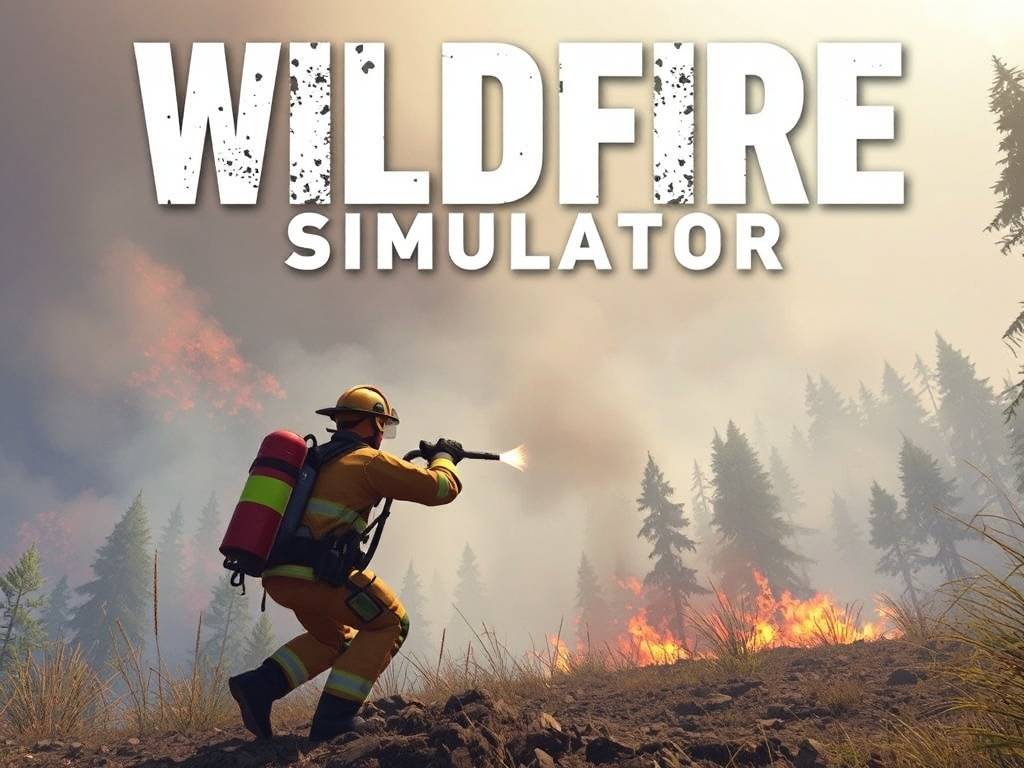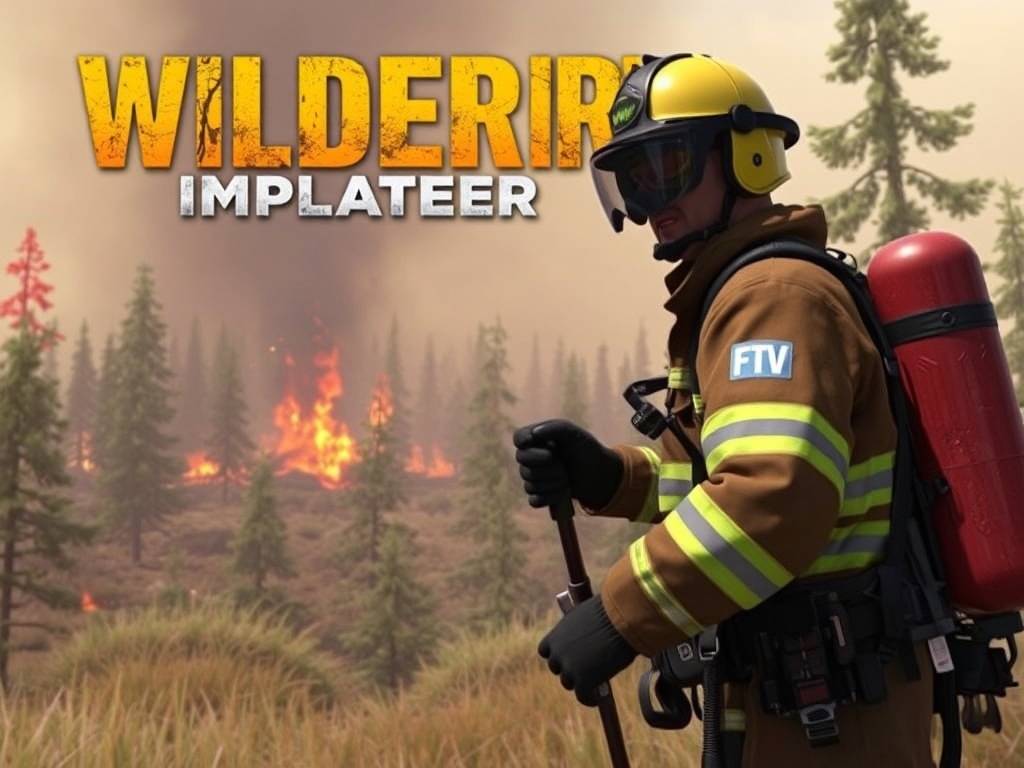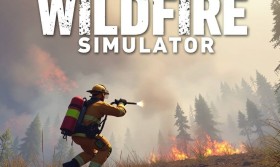Into the Inferno: How the Wildfire Simulator VR Firefighting Update is Forging a New Generation of Heroes
The crackle of radio chatter is drowned out by the roaring symphony of the inferno. Embers, like a swarm of angry fireflies, ride the scorching wind, igniting everything they touch. The heat is a physical force, pressing against your face shield. Through the thick, choking smoke, you see a wall of flame advancing toward a vulnerable community. Your heart pounds. This is not a scene from a disaster movie; this is the new frontline of firefighter training, made possible by the groundbreaking Wildfire Simulator VR and its latest, transformative Firefighting Update.
For years, the fight against wildfires has been a desperate race against time, climate, and an increasingly volatile environment. Traditional training, while invaluable, has inherent limitations. You cannot easily replicate the chaotic, multi-sensory overload of a real wildfire for thousands of trainees. You cannot practice triaging multiple spot fires igniting simultaneously across a digital landscape. And you certainly cannot reset a real forest with the click of a button. This is the critical gap that Wildfire Simulator VR was designed to fill, and with its new Firefighting Update, it has evolved from a remarkable tool into an indispensable one.

So, what exactly does this update bring to the virtual table? It’s a comprehensive suite of features that moves beyond observation and into full-blown, interactive suppression.
The Ultimate Virtual Proving Ground
The core of the Firefighting Update is the introduction of realistic firefighting mechanics. Users are no longer passive observers; they are active participants equipped with a full suite of virtual tools. The sensation of wielding a high-pressure hose is simulated with haptic feedback, the controller rumbling in your hands as you direct the virtual stream of water or retardant. The physics are meticulously crafted—water evaporates before touching the heart of the flame if you’re too far away, and the angle of your spray affects its effectiveness in cooling fuels and creating wet lines.
But this isn't just about putting water on flames. The update introduces the strategic deployment of aerial firefighting assets. As an incident commander, you can call in virtual air tankers, guiding them to drop precise lines of retardant to cut off a fire’s advance. You learn to coordinate these aerial assaults with ground crews, understanding the timing, the wind conditions that can blow the drop off target, and the critical importance of creating effective firebreaks. This immersive wildfire training technology teaches the delicate dance between ground and air, a coordination that is often the difference between containment and catastrophe.
Perhaps the most psychologically profound addition is the realistic fire behavior modeling. The simulator’s engine now incorporates the "Fire Triangle" (oxygen, heat, fuel) in real-time. Your actions directly influence the environment. Successfully creating a firebreak starves the flames of fuel, visibly slowing its progress. A sudden wind shift, modeled from real meteorological data, can cause a fire whirl to spontaneously generate, forcing you to react to a dangerous and unpredictable phenomenon. This dynamic system ensures that no two training scenarios are ever the same, pushing trainees to move beyond rote memorization and develop genuine, adaptive critical thinking under extreme pressure.

Solving the Unsolvable: A Holistic Training Ecosystem
The true genius of this update lies in how it bundles these features to solve multiple, interconnected problems faced by firefighting agencies worldwide.
First, it addresses the critical need for cost-effective wildfire safety preparedness. Sending a full crew and equipment into the field for a live-fire exercise is astronomically expensive and logistically complex. The VR wildfire simulator reduces these costs dramatically, allowing for near-infinite repetitions of complex scenarios without consuming a single gallon of water or diesel fuel. It enables effective wildfire response planning for entire departments, regardless of their budget size.
Second, it tackles the issue of risk-free environment for practicing wildfire containment strategies. Trainees can experience the consequences of a poor decision—a failed containment line, a misjudged escape route—without any real-world injury or loss of life. They can practice life-or-death maneuvers, like deploying a fire shelter, in a terrifyingly realistic yet completely safe setting. This builds not just skill, but also the crucial muscle memory and mental resilience needed when every second counts.
Third, and most importantly, it serves as a powerful tool for enhancing public awareness of wildfire prevention. While designed for professionals, accessible versions of this simulator can be used for community outreach. Allowing a homeowner to stand in the path of a virtual fire driven by high winds can convey the importance of creating defensible space around properties more powerfully than any brochure or lecture ever could. It transforms abstract risk into tangible, unforgettable experience, fostering a deeper understanding of wildfire dynamics and ecology for everyone.
From Pixels to Protection: The Real-World Impact
The applications are as diverse as they are impactful. A rookie firefighter can spend hours mastering hose handling and pump operation. A seasoned Type 1 Incident Commander can be thrust into a scenario mimicking the complex, urban-wildland interface of a California canyon, managing dozens of virtual units, assessing structure triage, and making gut-wrenching calls about resource allocation.
For researchers and fire ecologists, the simulator is a dynamic sandbox. They can model how a proposed forest thinning project might alter fire behavior or test how a new, faster-spreading invasive grass species could change the game. This advanced wildfire simulation software becomes a predictive tool, helping to shape land management policies and proactive wildfire mitigation techniques before a single spark flies.
The Wildfire Simulator VR Firefighting Update is more than just a software patch; it is a paradigm shift. It represents a future where our firefighters are not just brave, but supremely prepared. Where they have already faced a hundred infernos before they face their first real one. They will have felt the virtual heat, made tough calls under simulated pressure, and learned from virtual mistakes that carry no real penalty.
As we look toward a future where wildfires are likely to grow in intensity and frequency, our tools for preparation must evolve at an even faster pace. This update is a monumental leap in that evolution. It’s not about replacing the essential, gritty experience of the real world; it’s about augmenting it, ensuring that when our heroes walk into the smoke, they do so with the deepest well of knowledge and experience we can possibly provide. They are walking in better prepared, more strategic, and more likely to come home safe, all because they first dared to walk into the virtual inferno.


















